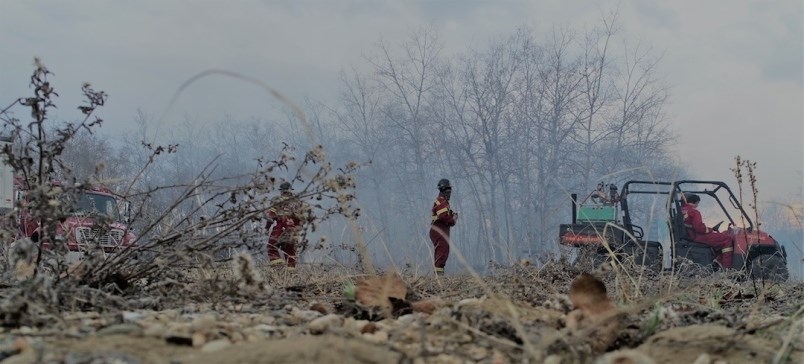Families should keep together when communities are evacuated during a dry wildfire season further complicated by COVID-19 this year, says a University of Saskatchewan professor.
“(COVID-19) creates a nightmare scenario for evacuation planners,” said anthropology Professor James Waldram, a researcher studying past wildfire evacuations.
Evacuation clashes with the social distancing measures that cancelled powwows, ceremonies and other events this year, and highlights old challenges, he said.
Waldram’s new report reviews the Pelican Narrows evacuations in 2017, when 3,000 residents left as wildfire approached the community.While damage was minimal, the report notes the fires strained extended and blended families who split up while evacuating.
Based on interviews with 56 residents, the report’s findings argue for more culturally appropriate evacuation measures tailored to northern Indigenous communities. On that front, elders play a particularly key role when developing a new approach to evacuations, Waldram said.
Many of the elders, who were considered more vulnerable, didn’t personally feel any more at-risk than other residents. Prioritizing their removal meant many families lost a key resource during a stressful period, he noted.
“You’re doing a great deal more damage than is necessary when you apply that assumption — fraction families up and spread them all around the province at a time of great distress.”
This loss of control as people boarded southbound busses also dredged up painful memories of residential schools, the report states. Its title, “Like Residential Schools All Over Again,” refers to the comparison interview subjects made between evacuations and their past trauma.
In that context, Waldram said the annual nature of wildfire evacuations means preparations can take more cultural factors into account, which would improve the model currently used across Canada.
Among other recommendations, the report calls for planners to assess risk on an individual level, instead of using categories like age.
Waldram suggests building a permanent evacuation structure in an urban centre like Prince Albert or La Ronge. Having a closer rallying point would limit the stress of travelling to the south, which should be a last resort, he said.
Similarly, family members providing food and shelter to evacuated relatives should receive more support, the report states.
It further proposes a larger role for local leaders when planning and declaring emergencies. That’s because if a First Nation declares an emergency on its own, it may also have to shoulder the costs of evacuating alone. The report says this may cloud leaders’ decision-making process when faced with an emergency.
Waldram says including these considerations will push evacuation organizers to consider other standards of success, including reduced stress on residents and culturally appropriate planning.
“The idea is if we keep everybody alive, this emergency was a success, it worked,” he said. “What we’re challenging is (to) raise that bar.”




